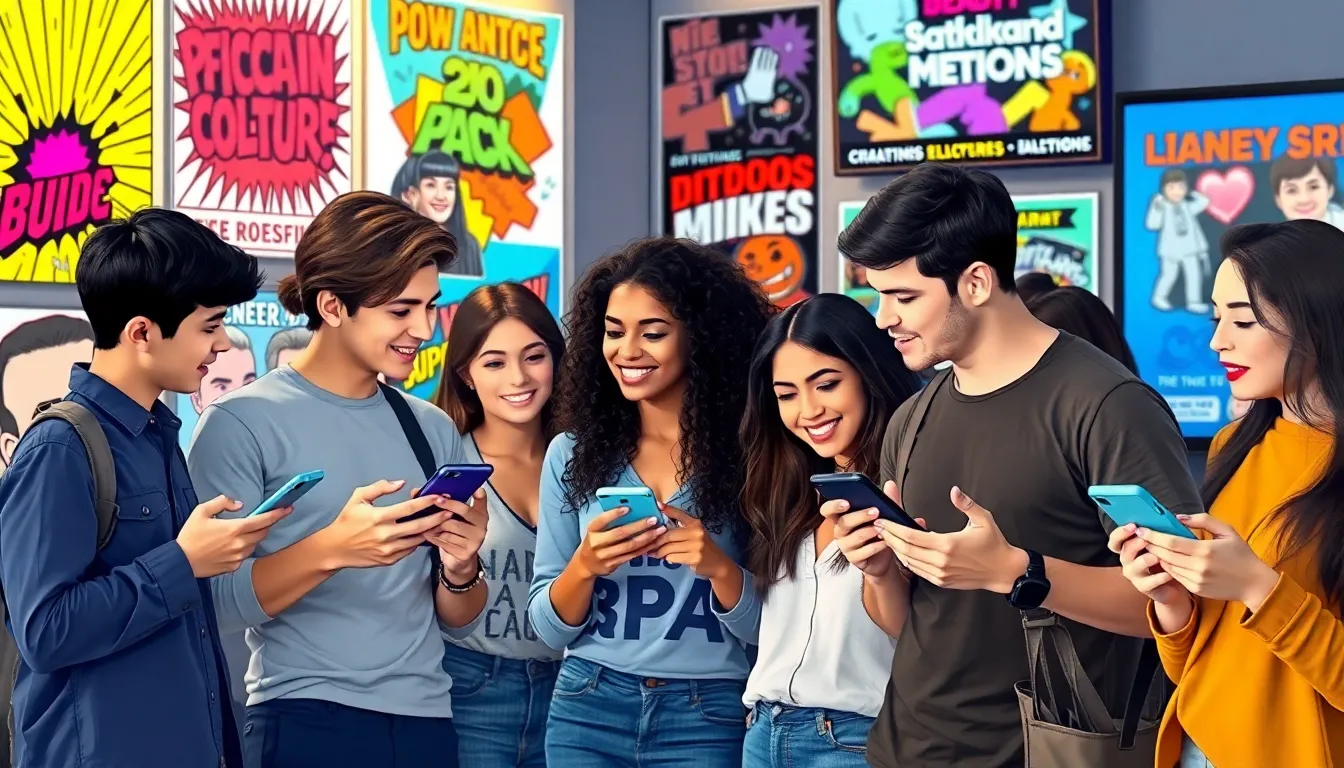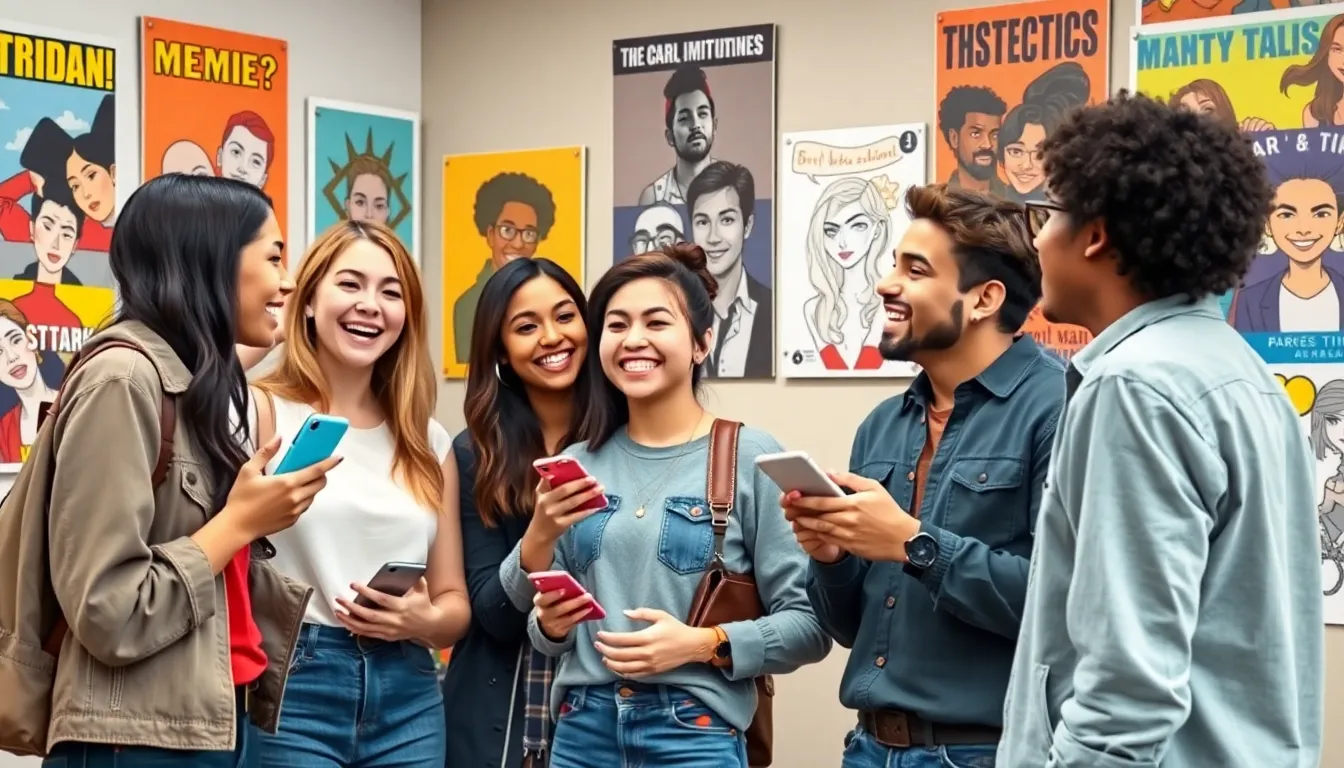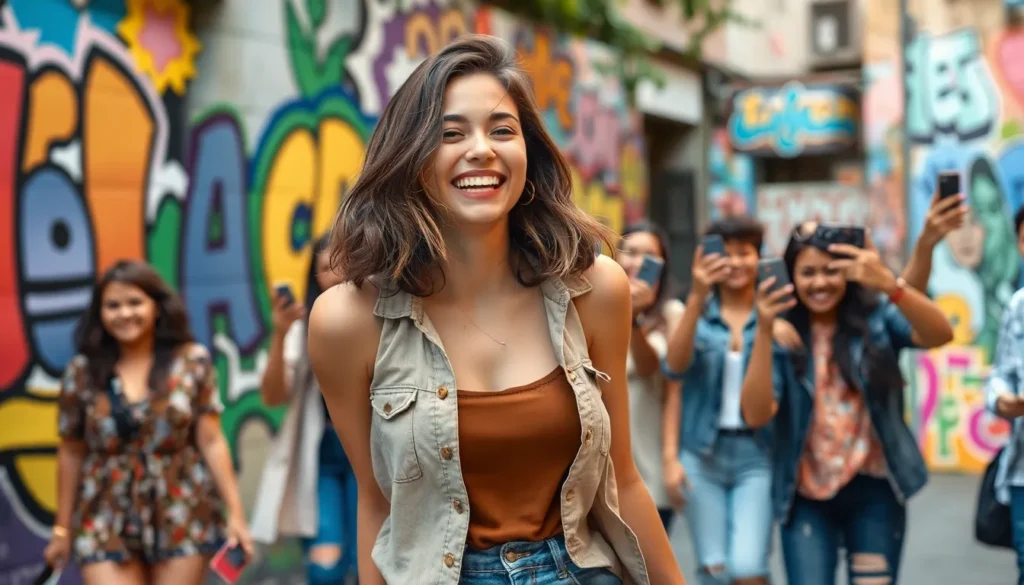In today’s digital playground, viral culture reigns supreme, turning everyday moments into global sensations faster than you can say “meme.” From dance challenges to outrageous pranks, the internet’s ability to catapult the mundane into the extraordinary has transformed how people connect, share, and laugh. It’s like a giant game of telephone, but instead of whispering secrets, everyone’s shouting out the latest trends.
Table of Contents
ToggleUnderstanding Viral Culture
Viral culture represents how trends and moments gain rapid popularity online. This phenomenon allows users to engage with content that resonates on a global scale.
Definition of Viral Culture
Viral culture refers to the quick dissemination of ideas, trends, or behaviors through social media platforms. This dynamic involves elements such as memes, videos, and challenges, which capture audiences’ attention. Individuals often engage with content, sharing it across multiple channels. When something goes viral, it transcends geographical boundaries, reaching diverse demographics. Interactions surrounding viral content foster a sense of community and participation among users.
Historical Context
Viral culture traces its roots back to the early days of the internet, where email chains and forums allowed for rapid idea sharing. The rise of platforms like YouTube in the mid-2000s introduced interactive content, which propelled viral trends. Social networks expanded access, with Facebook and Twitter contributing to content propagation. Events such as the Ice Bucket Challenge exemplified how social movements gained traction through viral campaigns. As technology evolved, so did the methods of spreading ideas, making viral culture a fundamental aspect of contemporary communication.
Key Characteristics of Viral Culture


Viral culture showcases unique traits that define its growing impact. Both social media platforms and trends contribute significantly to this phenomenon.
Social Media Influence
Social media acts as the primary catalyst for the spread of ideas and trends. Platforms like TikTok and Instagram enable users to share content instantly, maximizing reach and engagement. Videos or posts that resonate emotionally often achieve widespread visibility. Engagement metrics such as likes, shares, and comments drive further dissemination. This quick interaction enhances community building among audiences. Connections made online foster collaboration and imitation, encouraging the creation of new viral content. The speed of content sharing also allows for real-time commentary and feedback, shaping ongoing trends.
Memes and Trends
Memes become the lifeblood of viral culture, encapsulating humor and relatability in visual formats. Formats like GIFs and images enable rapid sharing, making them easy for users to create and adapt. Pop culture references often enhance their appeal, tapping into collective knowledge. Trends emerge as individuals respond to or reinterpret existing content. This phenomenon illustrates how quickly a meme can evolve, with variations spreading across different demographics. Challenges, dance routines, and #hashtags further support the trend cycle, amplifying participation. Each iteration adds layers, making viral content a reflection of shared experiences.
The Impact of Viral Culture
Viral culture significantly transforms cultural sharing and interaction. Users across various platforms participate in collective experiences, fostering a sense of belonging. Memes and trends promote shared humor and understanding, creating connections among diverse individuals. Digital spaces enable rapid dissemination of ideas, sparking conversations that cross cultural boundaries. Each viral moment fosters engagement and enriches interactions.
Brands recognize the influence of viral culture on marketing strategies. They adapt campaigns to leverage trending content, maximizing reach and engagement. Viral moments provide opportunities for authentic connections with audiences, enhancing brand loyalty. Metrics from social media platforms guide advertisers in identifying effective approaches. Utilizing user-generated content demonstrates relatability and fosters brand authenticity. Moreover, embracing viral trends allows brands to stay relevant in a fast-paced digital landscape.
Criticisms of Viral Culture
Critics of viral culture emphasize various concerns about its effects on society.
Superficial Engagement
Viral culture often promotes superficial engagement rather than meaningful interaction. Users may participate in trends without fully understanding their significance. Concentration on likes and shares can lead to fleeting connections, where users engage for a moment but fail to establish deeper relationships. Engagement metrics dominate, overshadowing genuine communication. Brands adopt viral trends for visibility, risking authenticity in their messaging. Authenticity diminishes as audiences recognize insincerity in content. This emphasis on quick hits sacrifices long-term connections in favor of immediate popularity, impacting how communities form around shared interests.
Negative Stereotypes
Viral culture perpetuates negative stereotypes and misinformation. Many trends simplify complex issues, leading to misrepresentation in viral content. Representation suffers as certain groups become caricatures for entertainment, reinforcing harmful narratives. These portrayals contribute to misunderstanding and stigmatization, affecting perceptions in real-life contexts. Additionally, the rapid spread of misinformation often occurs, where users share unverified content without fact-checking. This tendency can skew public opinion and create polarized environments. Communities become divided as misinformation fosters hostility, highlighting the darker side of viral culture’s reach and influence.

